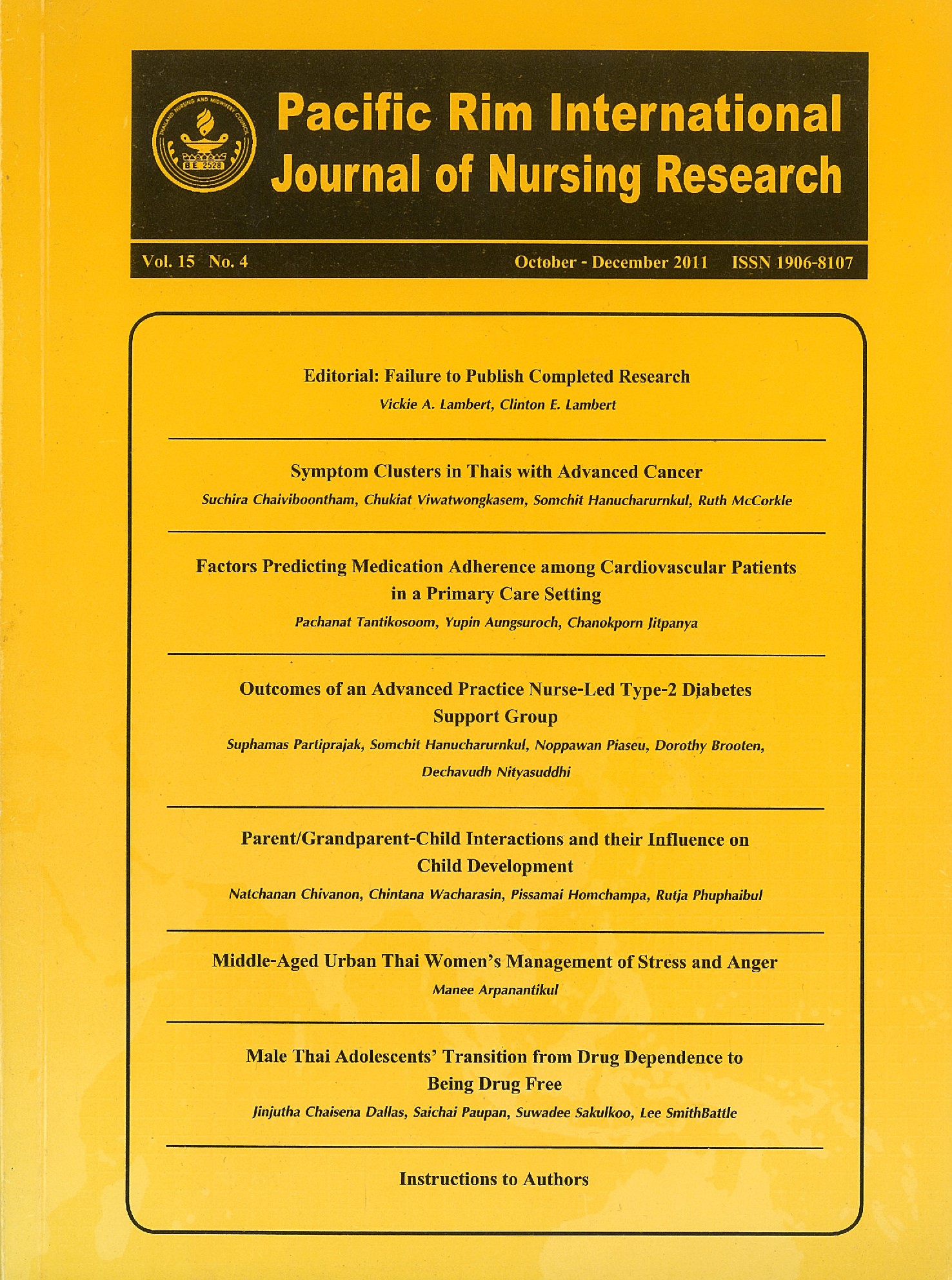Failure to Publish Completed Research
Abstract
Throughout our nursing careers, we have noted a sizable number of nurses complete a research project, but fail to publish their findings. If your findings are not published, no one ever knows what you did, how you did it or what you found. Some nurses seek to publish an abstract regarding their findings, but fail to recognize that publishing just an abstract is not sufficient for the evolving development of the nursing profession. Researchers who have investigated this dilemma found 62.5% of the studies identified, through their published abstracts, never were published in an article.1 This is a travesty! Failure to publish one’s completed research, in a sense, is a form of scientific misconduct.1 If nursing research findings are not published, the time and talents of many people are wasted, knowledge that could benefit patient care is lost, and the nursing profession fails to appropriately advance. This does not mean all completed research should be published. Flawed research, that fails to meet the demands of a peer review system, does not meet the scientific demands of a profession and should not be published! However, good, sound, scholarly research needs to be published and shared with the greater world of nursing.
Why are nurses with completed research projects not publishing? As we mentioned in a previous editorial, the reasons tend to be because many nurses believe: a) they “do not have enough time;”b) their “manuscript most likely will be rejected by a professional journal;” c) it is “too much work to publish;”and, d) they “have nothing to say that would be of interest to others.”2 However, none of these reasons are justifiable.
Stating you do “not have enough time” suggests you are not willing to set priorities and budget the time you spend involved in professional and “fun” activities (i.e. watching TV, partying, playing sports or visiting family/friends). Please recognize involvement in “fun” activities often provides temporary pleasure, while time devoted to professional activities (i.e. writing the findings of your research and submitting it to a professional journal for consideration for publication) provides a permanent way for you to influence nursing practice, education and administration for decades to come.
Believing the scholarly paper you submit to a professional journal will be rejected indicates you do not have confidence regarding your scholarly abilities. Although you may go through a number of rejections, revisions and resubmissions before having your manuscript accepted for publication, the process provides a learning and growth experience for you.
“Yes,” trying to get your research published requires a great deal of time and work. However, most everything in life that is of value and has quality involves a degree of commitment and/or work. Publishing one’s completed research is no different.
You truly have to believe that what you have done has value and is worth sharing with the greater world of nursing. Believing that you do not have anything to say indicates you do not believe in what you have done. Please recognize that as long as your research is not flawed, it provides information that needs to be shared, as a published article, with other nurses.
The following list of actions can help stimulate publication of completed research:
1. Encourage a potential author to set priorities and goals regarding the writing endeavor to which he/she needs to devote time.
2. Encourage institutions of higher learning to require doctoral students to devote time to writing and submitting one or more manuscript from their dissertation research, rather than spending time preparing a 100+ page dissertation that only will sit on the shelf of a library for only a few people to read.
3. Encourage nursing students to review and read recently published articles in scholarly nursing journals to see the importance and value of publishing research findings in a timely manner.
4. Recognize individuals who are internally motivated to write and publish are more likely to look for time and ways to publish to meet their needs to share what they have done with others.
5. Encourage individuals who are not necessarily driven to write and publish to team up with those who are driven to publish.
6. Encourage researchers, who have poor writing skills, to seek assistance from experienced professionals who have strong publication track records.
7. Encourage institutions of higher learning to base a portion of one’s professional promotion, tenure and yearly salary increase on the number of scholarly articles published.
8. Encourage institutions of higher learning to reward faculty members with money and/or travel to professional research conferences when they successfully publish their research in a scholarly journal.
9. Encourage institutions of higher learning to lighten the clinical and/or teaching loads of faculty members, for a specific time frame, to allow for sufficient time to conduct research, write and submit scholarly works for consideration for publication.
A recent examination of incentives to publish revealed the implementation of incentives was associated with an increase in manuscript submissions. However, it was found, based upon the type of incentive, that: a) career incentives (i.e. promotion, tenure and salary increases) were positively correlated with manuscript submissions, as well as with publications; and, b) cash incentives encouraged an increase in submission of research manuscripts, but were correlated with a low manuscript acceptance rate.3
If nurse researchers are to improve the quality of practice, education and administration, they have a moral obligation to publish their research findings. Because it is unlikely to have a significant impact on the nursing profession, research that has not been published is not only unfinished, but is meaningless.
Downloads
How to Cite
Issue
Section
License
Copyright: The Pacific Rim International Journal of Nursing Research, Thailand Nursing & Midwifery Council has exclusive rights to publish, reproduce and distribute the manuscript and all contents therein.








.png)



